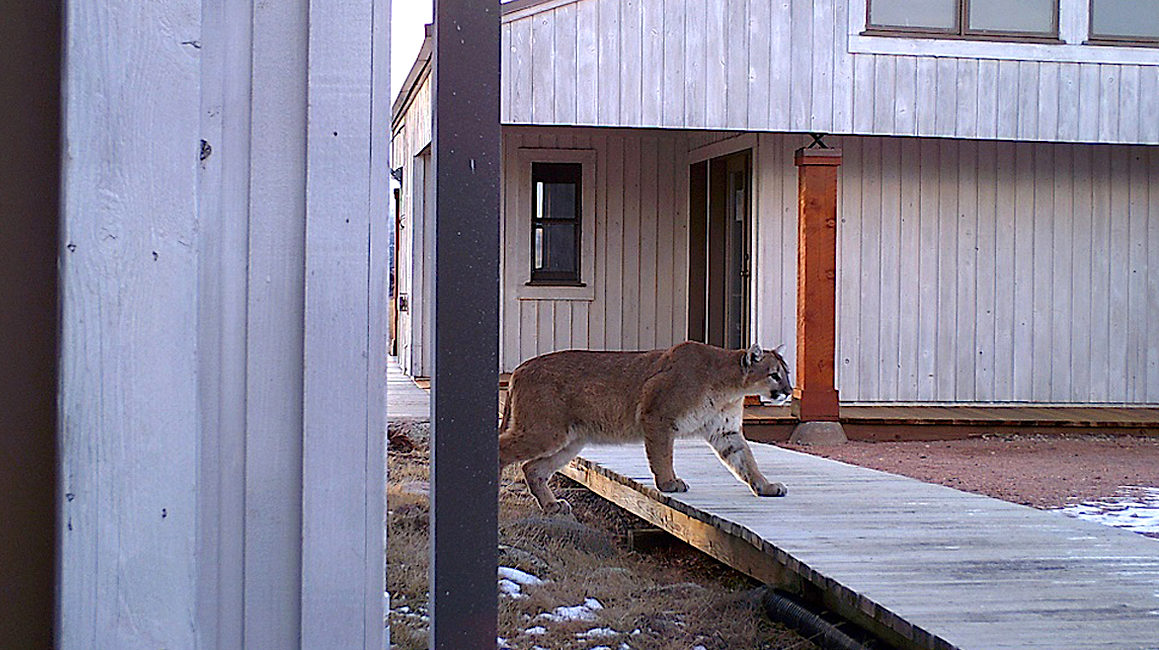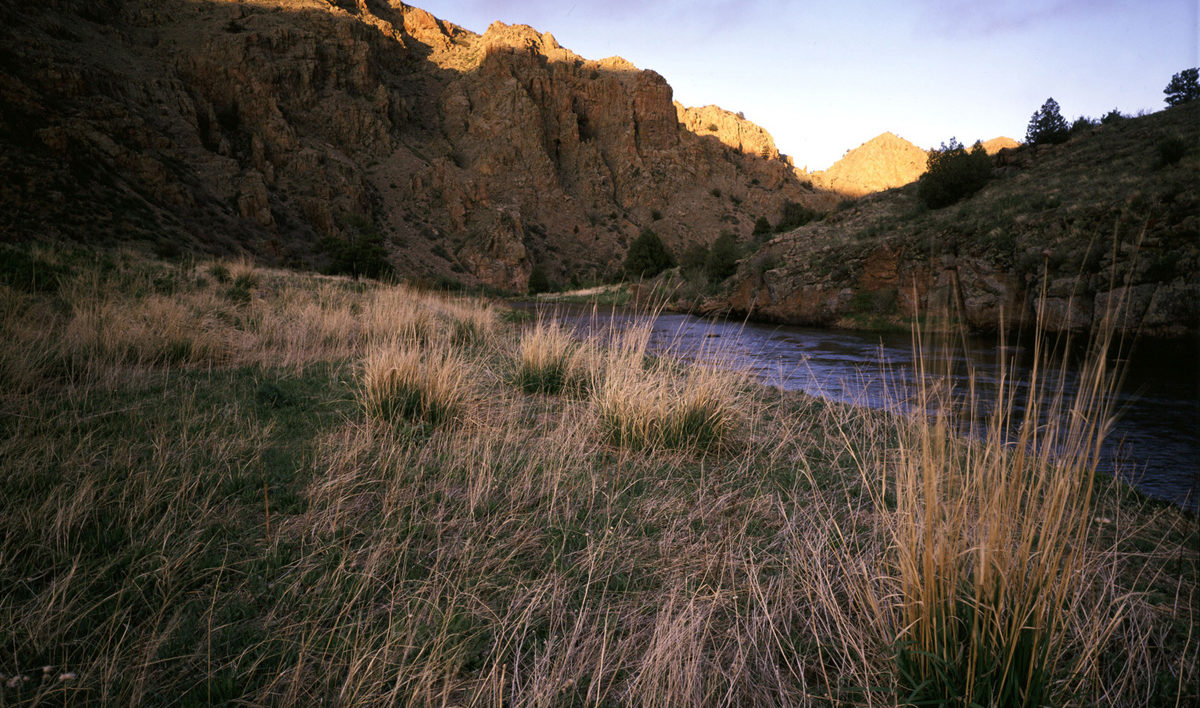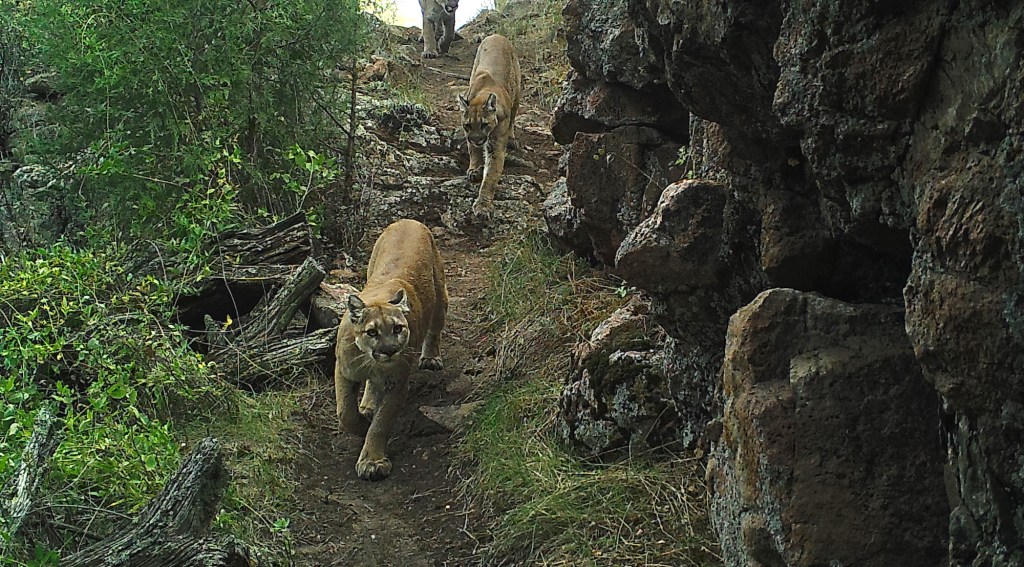For more than 30 years, The Nature Conservancy’s Phantom Canyon Preserve has sought balance between the needs of people and the needs of wildlife.
The 1,200-acre preserve is situated in one of the last roadless canyons on Colorado’s Front Range, where herds of bighorn sheep and elk roam. It is home to more than 200 plant species, including some that are rare and endemic.
But the preserve sits only 30 miles from the growing city of Fort Collins. It is connected to a landscape dotted with private ranches. On its way to fields and cities the North Fork of the Cache la Poudre River provides habitat for native fish like the colorful Iowa darter, and for the American dipper, a bird that forages underwater.
Downstream, the river is utilized for irrigation and utilities. Its water is essential for everything from hay for livestock to the region’s famous breweries.
A recent trail camera photo taken at Phantom Canyon Preserve perhaps serves as the perfect illustration of the blurry line between the human and the natural. It captures a mountain lion striding, not through wilderness, but through the preserve’s cluster of buildings.

“The preserve is not open for six months of the year,” says Sally Ross, The Nature Conservancy in Colorado’s Laramie Hills program director. “I visit a couple times a month and collect the cards from the trail camera. Usually I just sort through lots of rabbit photos. But this time, there was this big female lion, walking right in front of the bunkhouse.”
Despite the surprise of that particular mountain lion, Phantom Canyon is cat country. About 18 months ago, Ross began noting more scat and tracks on her visit to the preserve. In the mid-2000’s, the Colorado Department of Fish and Wildlife culled mule deer due to the presence of Chronic Wasting Disease. The deer herd has since increased, and with it came signs of mountain lions.
Not long after Ross began noticing scats, a trail camera captured this footage of a mountain lion with cubs.
Trail cameras at the preserve have captured images of other interesting wildlife, including black bears, bobcats, elk and mule deer.
While Ross acknowledged this is anecdotal, she has noticed one change around preserve headquarters with the increase in mountain lion sign and sightings. “When I started here three years ago, the rabbits would chew the wires on cars we parked around the preserve. It cost TNC a lot of money,” she says. “Since the increase in lion signs, we haven’t had any issue with rabbit damage.”

More About Phantom Canyon Preserve
The Nature Conservancy acquired the 1,200-acre Phantom Canyon Preserve in 1987, primarily to protect native plants. Since then, it has become an anchor to build community engagement and to protect private lands on the Colorado Front Range.
The Conservancy has worked with utilities, land management agencies, private landowners and other conservation groups to create a 22-mile corridor that connects high elevation public lands in the west (Rocky Mountain National Park) to low-elevation private ranches in the east.
Since the effort began, there have been approximately 100,000 private acres protected under some form of conservation management, which is connected to 110,000-acres of publicly protected lands.
Today, Phantom is used as a place to inspire, educate, and demonstrate to our users the impact of conservation and good land management practices. Read more about the project.




Love the cougar video & article!! We hope the Conservancy & other wonderful groups can/will continue to work hard to preserve them & our other brothers in the wild. Thank God for all you do!
great to see the lions saundering around….better than being treed or dead next to a rifle
Love it! Way to go Colorado!
Now if we could just encourage our current administration to enhance these lands and not make them available for business profit, especially destructive mining techniques. We are blessed with a beautiful country and wild animals and plant life.
Having lived in Woodland Park and Parker, I was interested in your story. We had quite a few miles living within Parker limits. Then we had a female lion that raised her Cubs in the drainage about 2-3 hundred meters from our house. This was back in the late 80s.